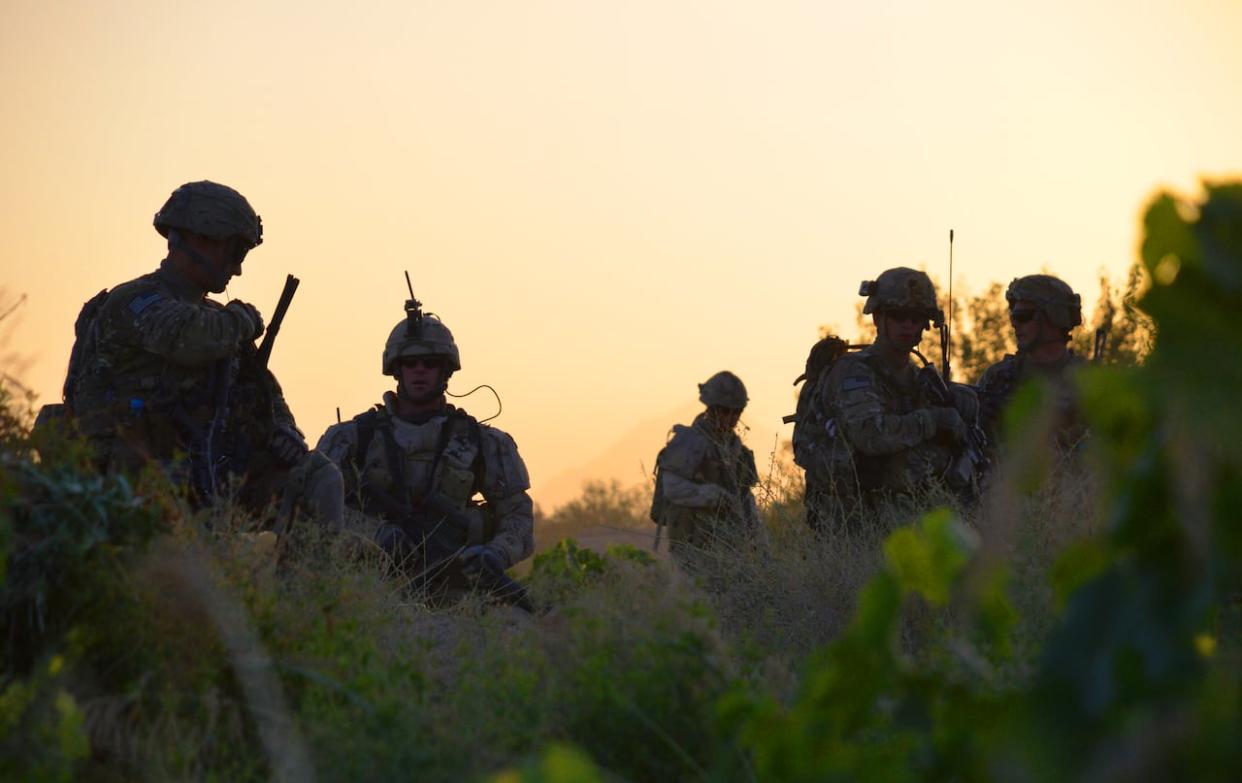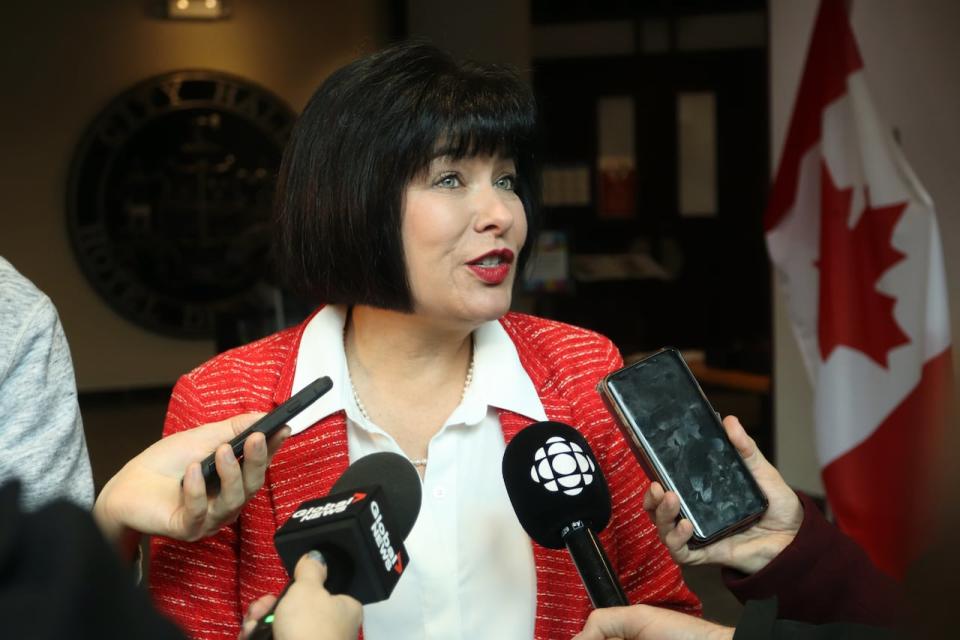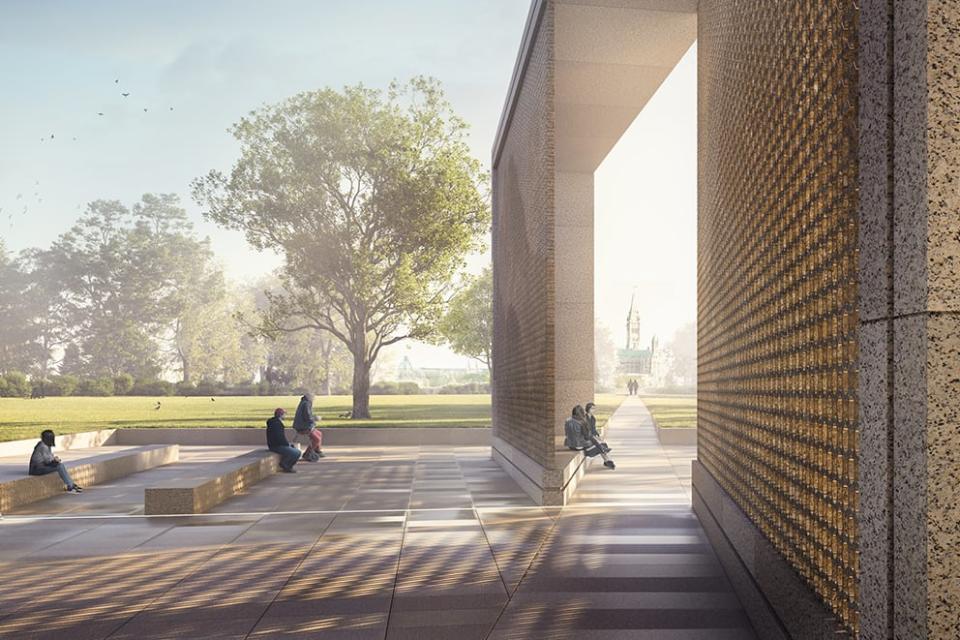Veterans Affairs worried about blowback after it rejected Afghan memorial design, memo says

Officials at Veterans Affairs (VAC) feared that their decision to overrule the government's handpicked jury on a proposed design for the Afghan war memorial would be met with a "mixed reaction" that could "negatively affect the families of the fallen," says an internal department memo obtained by Radio-Canada.
Last June, the department chose a design by Indigenous artist Adrian Stimson for the planned $3 million memorial — even though an independent jury appointed by the government chose a design proposed by Team Daoust, backed by architects Renée Daoust and Luca Fortin and former Supreme Court justice Louise Arbour.
The 2023 department memo indicates the government worried that overruling its own process for selecting a design could damage the department's reputation.
"Veterans of the mission may feel disrespected by the lack of due process on behalf of the government of Canada," said the document. "The government of Canada can be criticized for failing to follow the procurement process and dismissing the decision of the jury."
The decision to go with Stimson's design apparently was popular with many veterans, however — including military historian Lee Windsor, a veteran who was a member of the design jury that was overruled by VAC.

The design by Team Stimson chosen by the federal government for Canada's national Afghan war memorial. (Veterans Affairs Canada)
In an email he wrote to a senior official at Veterans Affairs Canada — obtained by CBC/Radio Canada under the access to information law — Windsor said he was delighted by the news.
"Whoooooohooooooo! You made my year! Maybe my decade!!!!!" Windsor wrote last June.
The University of New Brunswick professor told Radio-Canada he could not talk about the confidential deliberations of the jury in 2021. He was one of four members of the seven-person jury who were appointed by Veterans Affairs Canada; the other three came from the worlds of art and architecture and were chosen by the Department of Canadian Heritage.
Windsor said he made his comments about the government's decision in 2023 as a member of Veterans Affairs' commemoration advisory group.
"The advisory group was adamant that the voice of veterans and the will of veterans be the central ingredient to determining what the design would look like," he said. "Veterans needed to be able to see themselves in this monument and feel that their views were respected and heard."
The federal government repeatedly has cited the findings of an unscientific survey to justify its decision to award the contract to the Stimson Group, arguing the design was much more popular among Canadians who served in Afghanistan and their families.
Just over 12,000 Canadians responded to the survey, including over 3,000 who identified as having served in Afghanistan and another 3,000 who said they were associated with the mission. Veterans Affairs Minister Ginette Petitpas Taylor said survey participants chose Stimson's design by a wide margin.

Veterans Affairs Minister Ginette Petitpas Taylor has said the Stimson design was the clear choice of veterans. (Shane Magee/CBC)
"Just because it wasn't a scientific survey doesn't mean that it's not valid," Petitpas Taylor told a parliamentary committee last year.
"We owe these veterans a debt we can never fully repay. Therefore, choosing the design that best matches the monument that veterans and people who played a role in the Afghanistan mission want was the least we could do."
The design by Team Stimson — four helmets and flak jackets draped on crosses ranged around the centre of a circular platform — is a straightforward tribute to the work of Canada's military in Afghanistan from 2001 to 2014.
The design chosen by the seven-member jury, meanwhile, was meant to evoke Afghanistan's long road to democracy, with the monument placed along a straight line between the War Museum in Ottawa and Parliament.

One of five proposed designs for Canada's national memorial to the Afghan war. This design is by Team Daoust. It was chosen by an expert panel as the winner of the design competition, but the federal government overruled the decision and awarded the design to another competitor. (Veterans Affairs Canada)
The monument is intended to commemorate Canada's mission in Afghanistan, in which 158 Canadian military personnel and seven civilians died. More than 40,000 Canadians served in Afghanistan; most of them were military personnel but some were government employees and members of humanitarian groups.
VAC's worries about controversy turned out to be well-founded. Opposition parties have criticized the government's handling of the project.
"When we see that a monument dedicated to the memory of the soldiers and civilians who participated in the war in Afghanistan is treated in this way, it just discredits the whole process and could mean that people do not recognize themselves in this monument," Conservative MP Pierre Paul-Hus said.
He said the project likely was marred by political interference and he hopes Team Daoust inherits the contract.
Bloc Québécois MP Luc Desilets said Ottawa has two choices: award the contract to Team Daoust or start over.
"Veterans went to Afghanistan to fight for democracy and peace, and ... the government wasn't even able to respect its own rules. Their process is not democratic," he said.
The federal government offered more than $30,000 in compensation to Team Daoust last year. It did not accept the money and is still trying to obtain the contract.
Reached by email, Stimson said he did not want to comment on the selection process. He said he recently visited the Ottawa site where the monument is to be built.


